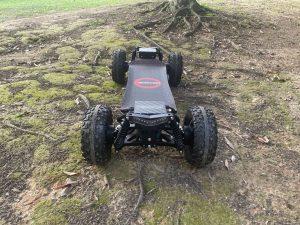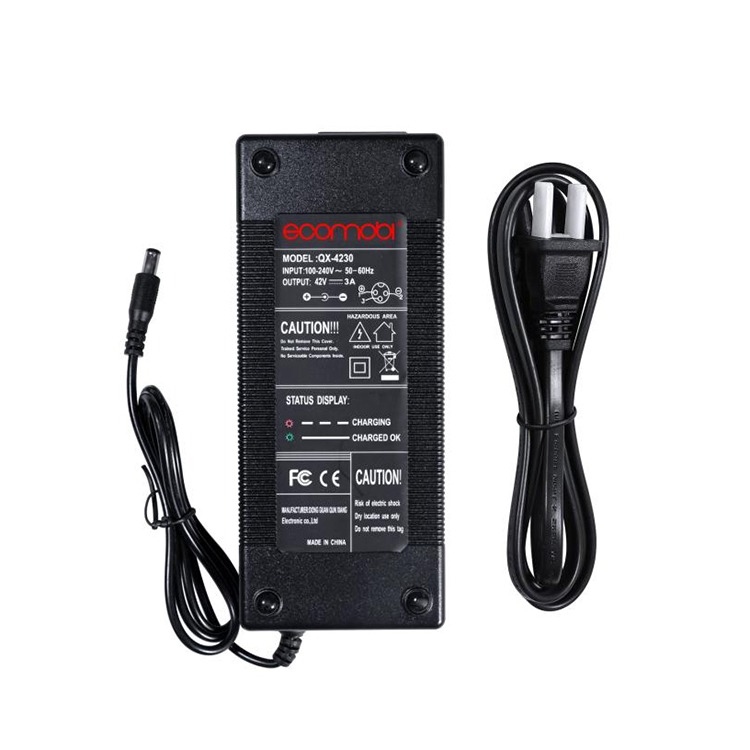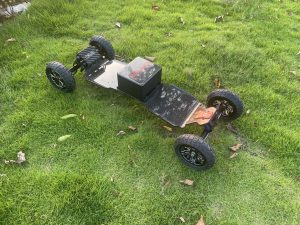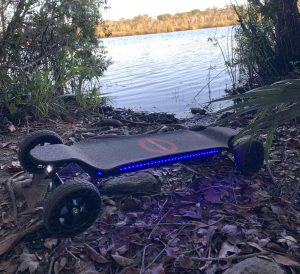Electric skateboards have become increasingly popular over the years, providing a fun and eco-friendly way to get around. However, there may come a time when your electric skateboard won’t charge, leaving you stranded and unable to ride. In this article, we will explore why your electric skateboard may not be charging and provide some solutions to help you get back on your board.

Check the Charging Cable
One of the most common reasons an electric skateboard won’t charge is due to a faulty charging cable. Inspect the entire length of the charging cable for any cuts, breaks cracked insulation, or frayed wires. Check that the connectors at both ends make good contact when plugged into the charger port on your board and wall outlet. If you notice any damage to the charging cable, replace it immediately with an official cable for your electric skateboard brand. A faulty cable can pose a safety risk and prevent your board from charging properly.
Inspect the Battery
Over time and through regular use, batteries can develop issues that prevent them from holding a full charge. To check your battery, first visually inspect it for any physical damage like cracks, swelling, or leakages.
Then test the battery capacity using a multimeter or dedicated battery tester. If the capacity reads below 80% of its original value, then the battery has likely reached the end of its lifespan and needs to be replaced. New batteries can charge normally and provide the runtime you expect from your board. So checking and potentially replacing a worn-out battery should be one of the first steps when troubleshooting why an electric skateboard won’t charge.
Check the Charger
A faulty charger is another common reason your electric skateboard won’t charge. To check if your charger is the issue, first visually inspect it for any damage like cracks, loose parts, or burn marks.
Then, test the charger output with a multimeter. Set the meter to DC voltage and plug the charger into an outlet but not the skateboard. If the voltage matches the rating listed on the charger, then it’s likely still working properly.
However, if the multimeter reading is incorrect or the charger feels hot even when not in use, then the charger has likely failed and needs to be replaced. A faulty charger may not provide enough power to the battery, which prevents it from fully charging.
So if you’ve ruled out issues with the charging cable and battery, then checking that your charger is functioning correctly and providing the correct voltage output should be one of the next troubleshooting steps when your electric skateboard won’t charge.

Check the Power Outlet
One of the simplest things to check when your electric skateboard won’t charge is the power outlet itself. Issues with the outlet are often overlooked but can easily prevent charging.
Start by visually inspecting the outlet for any signs of damage like cracked or broken plastic, loose screw terminals, or burned marks. Then, test the outlet with a plug-in outlet tester to confirm it’s functioning properly. These testers typically cost $5-$10 and light up green if the outlet is safe.
If possible, also try charging the board from a different working outlet to see if that allows it to charge. This will confirm whether the original outlet was the problem.
Some other issues to check for are:
- The outlet’s circuit breaker may be tripped. Check and reset all breakers for the circuit the outlet is on.
- The outlet’s fuse may be blown. Check and replace any blown fuses.
- The outlet may be wired incorrectly. Have an electrician inspect the outlet’s wiring if other issues have been ruled out.
So checking that your power outlet is functioning is an essential troubleshooting step when your electric skateboard won’t charge for an otherwise unknown reason.
Check the BMS (Battery Management System)
If you have confirmed that the charging cable, battery, charger, and outlet are all functioning properly, then the issue may lie with the battery management system (BMS) itself.
The BMS monitors the battery’s voltage, temperature, and current to protect it from damage. Over time, electronic components in the BMS can fail.
To test the BMS:
- Check for error codes. Many BMS units have LED lights that flash error codes when malfunctioning. Refer to the manual to interpret these codes.
- Test the voltage readings. Use a multimeter to confirm the BMS is detecting the battery’s voltage accurately. An incorrect reading may indicate a faulty sensor.
- If possible, bypass the BMS temporarily. You can do this by directly connecting the charger to the battery (with extreme caution). If the board then charges, the BMS is likely defective.
- Finally, replace the BMS unit. This may require soldering skills and access to the board’s circuit diagram. OEM BMS replacements cost $50-$150 typically.
So if you’ve ruled out other potential causes, checking whether your electric skateboard’s BMS has failed is an important troubleshooting step. A malfunctioning BMS is one of the most common reasons a board might refuse to charge.

Check the Fuse
If the fuse on your electric skateboard has blown, it can prevent the board from charging properly. Fuses are designed to blow when there is a short circuit or overload to protect other electrical components.
To check the fuse:
- Locate the fuse. Fuses are typically found near the battery or charging port.
- Inspect the fuse visually. A blown fuse may have a broken filament, or the metal ends may appear discolored.
- Test the fuse with a multimeter set to resistance. A working fuse will show continuity, while a blown fuse will show no connection.
- Replace any blown fuses with a new one of the same rating. The rating (in amps) will be printed on the old fuse.
- Try charging the board again. If it now charges, then a blown a fuse was likely preventing it previously.
Replacing a blown fuse is a simple and affordable repair. Common causes of a blown fuse include wiring issues, short circuits, or surge currents from impact. So checking the fuse should be part of your standard troubleshooting process when an electric skateboard doesn’t charge.
Check the Connectors
- Inspect all connectors for any physical damage like cracks, broken clips, or bent pins.
- Push and pull firmly on the connectors to ensure they are fully seated.
- Use a multimeter to test for continuity across connector pins. A disconnected or loose connector will show no continuity.
- Gently bend back any misaligned pins to improve contact. However, severely bent pins may require replacing the entire connector.
- Try charging the board again. If it now charges, a loose connector was likely preventing it before.
The main connectors to check are:
- Charging port connector – Where the charging cable plugs into the board
- Battery connectors – Where the battery plugs into the electronics
- Motor connectors – Where the motor wires connect to the speed controller
If you find an issue with a connector, you may be able to reseat or bend the pins. However, severely damaged connectors will likely require replacement. So checking all connectors should be part of the routine troubleshooting process when an electric skateboard doesn’t charge.

Check the On/Off Switch
An issue with the on/off switch on your electric skateboard can prevent it from charging properly. Over time and with regular use, switches can develop faults that interfere with the charging circuit.
To check the on/off switch:
- Inspect the switch for any physical damage like cracks, loose or popped-off parts.
- Toggle the switch repeatedly to test for smooth operation and that it fully turns on and off.
- Use a multimeter to test for continuity across the switch contacts in both the on and off positions. A malfunctioning switch may not show proper continuity.
- Try bypassing the switch temporarily by connecting the charging cable directly to the battery. If the board now charges, the switch is likely faulty.
- The ultimate fix is typically to replace the entire on/off switch. This part only costs around $10-$20 and is easy to install.
So if you’ve checked all other possible causes and your electric skateboard still won’t charge, inspecting and potentially replacing the on/off switch should be the next troubleshooting step. A malfunctioning switch is a common issue that can prevent the charging circuit from completing.
Conclusion
Hopefully, following the troubleshooting steps outlined in this article has helped identify and resolve the issue preventing your electric skateboard from charging. The most common causes for an electric skateboard that won’t charge include faults with the charging cable, battery, charger, power outlet, BMS, or fuse. However, more complex problems like loose connectors or a faulty on/off switch can also prevent charging.
If, after checking all of the components mentioned above, your board still won’t charge, it may be time to contact the manufacturer or an authorized repair shop for further assistance. They will have the expertise and official parts to diagnose and fix any underlying electrical faults.
While repairing an electric skateboard yourself can save money, complex issues may require specialized knowledge and tools. So weigh the costs and your own skill level before embarking on any major repairs.
The takeaway is that when troubleshooting why an electric skateboard won’t charge, always start with the simplest and most inexpensive components first. Methodically work your way through the checklists provided to systematically eliminate potential causes until you identify the root problem.
With patience and the proper troubleshooting process, you can resolve most any issue preventing your electric skateboard from charging again. Good luck and happy riding!
Read More
- How To Choose The Right Remote Control For Electric Skateboard
- Top 10 Off Road Electric Skateboards On The Market
- How To Choose The Right Electric Skateboard
- Top 5 Electric Skateboard On The Market
- Beginners Guide To Electric Mountain Board Control




